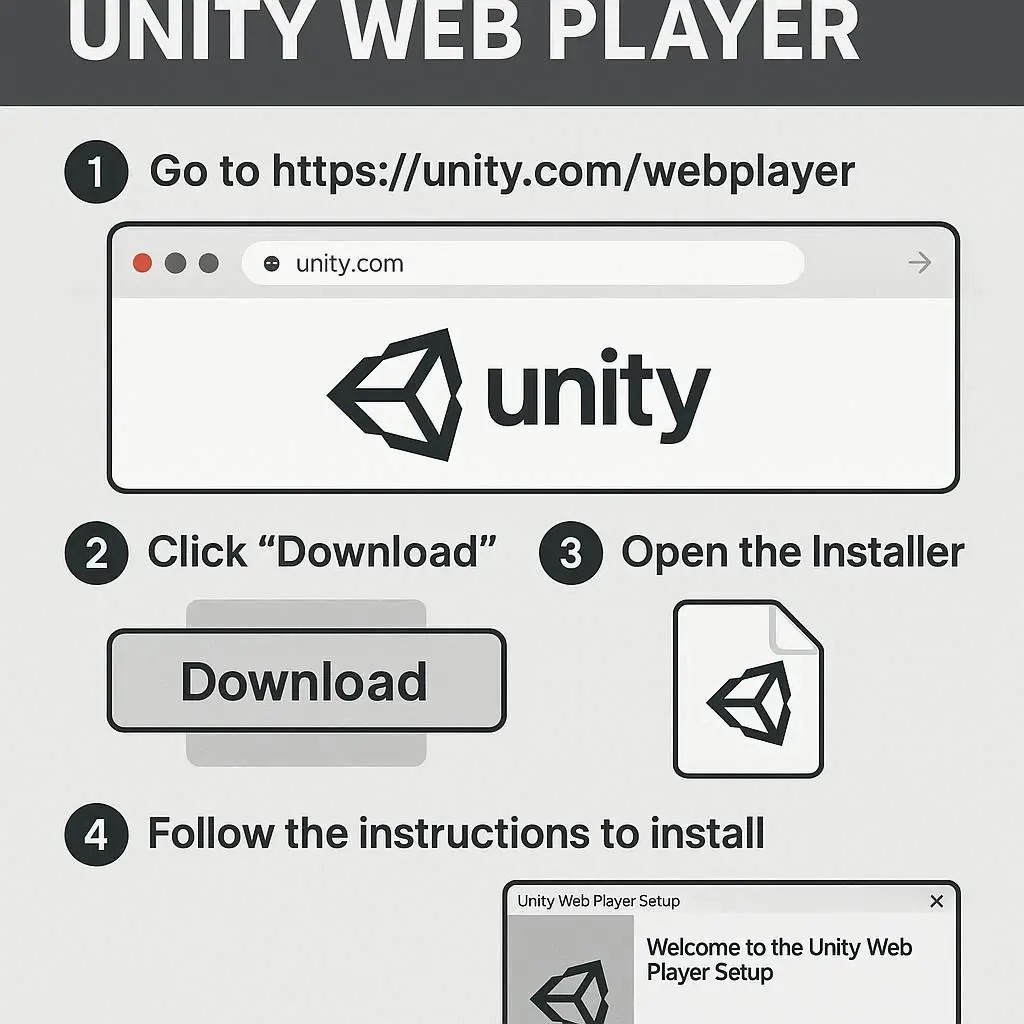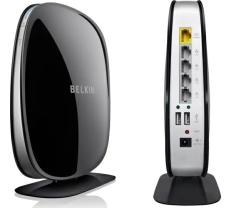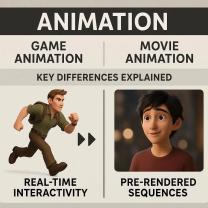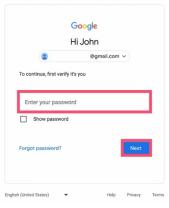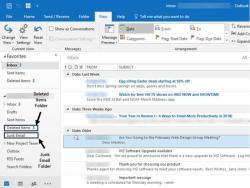How do you install Unity Web Player?
Unity Web Player was a browser plug-in used to run games and apps made with older versions of Unity. It is now deprecated and no longer supported on modern browsers (Chrome, Firefox, Edge, Safari all removed NPAPI plug-in support years ago).
If you’re trying to play a Unity Web Player game today, your best option is usually to:
Look for a WebGL version of the game (Unity now exports to WebGL instead of Web Player).
Or use a standalone executable provided by the developer.
That said, if you specifically want to install Unity Web Player for an older system (e.g., Windows 7/8 with Internet Explorer), here’s how:
Step-by-Step: Installing Unity Web Player (Legacy)
Download the Installer
Go to the official Unity archive page: Unity Web Player Download Archive (look under legacy support).
Or find the last Unity Web Player installer (UnityWebPlayer.exe) from a trusted source.
Run the Installer
Double-click the downloaded .
UnityWebPlayer.exeFollow the on-screen setup instructions. It installs the plug-in into your system.
Restart Your Browser
Close all browser windows.
Reopen the browser (only old browsers that support NPAPI, like Internet Explorer or Firefox 51 and older, will work).
Verify Installation
Visit Unity’s old Web Player test page (may be archived).
If installed correctly, you should see a confirmation message and be able to run Unity Web Player content.
Important Notes
Not supported in modern browsers – Chrome, Edge, Safari, and Firefox (52+) no longer work.
Works best on Windows with Internet Explorer 11 or old Firefox.
Mac support is very limited since macOS dropped NPAPI plug-ins.
How to Install Unity Web Player Step by Step
Please note: This information is for historical reference only. The Unity Web Player was officially discontinued by Unity in 2016 and is not supported by any modern web browsers.
In its time, the Unity Web Player was a browser plugin that allowed users to run 3D games and applications built with the Unity engine directly within a web browser. The installation process was relatively straightforward:
Find a compatible website: A website hosting a Unity Web Player game would prompt you to install the plugin.
Download the installer: Clicking the "Install" button would download a small installer file.
Run the installer: You would then run the downloaded
.exe(for Windows) or.dmg(for macOS) file. The installer was lightweight and typically finished in seconds.Restart your browser: After the installation completed, you were often required to restart your browser for the plugin to be properly enabled.
Enable the plugin: On some browsers, such as older versions of Firefox, you would need to manually enable the plugin in your browser's add-on or plugin manager before you could play the game.
System Requirements for Unity Web Player
As the Unity Web Player was designed to be a universal browser plugin, its system requirements were minimal, but they did depend on the game itself. The player itself needed a computer with:
Operating System: Windows XP SP2 or later, or macOS 10.5 or later.
Browser: An NPAPI-compatible browser such as an older version of Firefox, Safari, or Internet Explorer. Modern browsers like Chrome and Edge do not support NPAPI plugins.
CPU: An x86 or x64 processor with SSE2 instruction set support.
Graphics: A graphics card with hardware vendor-supported drivers and DirectX 9.0c or OpenGL 2.1 capabilities.
It's important to remember that the system requirements of the game itself could be much higher than those of the player.
Troubleshooting Installation Issues
Since the Unity Web Player is no longer supported, the most common "troubleshooting" issue today is that it simply will not work. In the past, however, common problems included:
Browser compatibility: The most frequent issue was that the user's browser did not support the necessary NPAPI technology. This became a widespread problem after 2015 when major browsers like Chrome, Firefox, and Edge began deprecating and removing support for NPAPI plugins due to security concerns.
Plugin not enabled: On compatible browsers, users sometimes forgot to manually enable the plugin after installation.
Driver issues: Outdated graphics drivers could prevent the player from initializing correctly, leading to a black screen or a crash.
Antivirus/firewall blocks: Security software could sometimes block the installation or the network communication required for the player to function.
Updating and Maintaining Unity Web Player
The Unity Web Player was designed to automatically update itself whenever a user played a game built with a newer version of the engine. A pop-up would notify the user that an update was available, and the process would happen in the background.
Manual updates: There was also an option to manually check for updates through the plugin's control panel, which was accessible from the Windows Control Panel or macOS System Preferences.
Maintaining compatibility: For developers, maintaining a game for the Web Player meant keeping it compatible with the final versions of the plugin. However, with the transition to WebGL, this platform became obsolete, and developers were encouraged to export their content to the new format.
Security Tips When Using Unity Web Player
As with any plugin-based technology, the Unity Web Player presented potential security vulnerabilities. Here are some of the security tips that were relevant during its active life:
Only install from trusted sources: Users were advised to only download and install the Web Player from the official Unity website.
Keep the plugin updated: Since the player had an auto-update feature, keeping it updated was a primary way to patch any discovered vulnerabilities.
Use a modern browser: The security risks associated with plugins like the Web Player were a major factor in modern browsers moving away from NPAPI. By using a browser like Chrome or Firefox, users were automatically protected because these browsers did not allow the plugin to run.
The Future of Web Gaming:
The discontinuation of the Unity Web Player was part of a larger industry-wide shift away from plugins and towards open web standards. Today, Unity content is exported using WebGL and WebAssembly, which allows games to run directly in modern browsers without any plugins, offering a much more secure and compatible experience.
